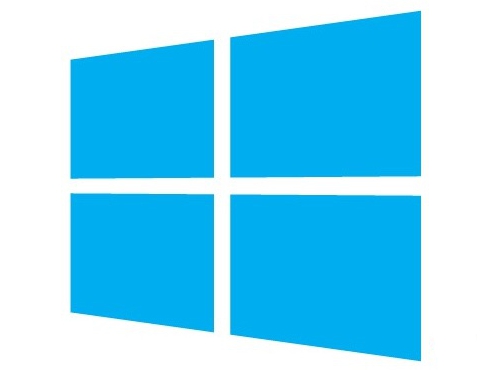Microsoft Talks More About Next Version of Windows
Tony Prophet, corporate vice president of Windows Marketing, provided some insight about what Microsoft plans to implement in the next version of Windows, namely Windows 9 Threshold. He said the company is "hard at work" on the next-generation OS, which backs up claims that Microsoft is pushing to get Windows 9 out to customers as quickly as possible.
For starters, Prophet said that the new Start Menu will be better because it will have Live Tiles and Modern UI apps. This we already know thanks to the screenshot provided by Microsoft during BUILD 2014 in April, and the more recent leaks surrounding Windows 9. But the timing of the new Start Menu is unknown. It will either find its way into Update 2 slated to launch next month, or Windows 9, which could arrive as a public beta in Q4 2014 followed by the full release in April 2015, according to some reports.
Previous reports claim that Microsoft is working to bring Modern UI apps to the desktop, meaning they will be windowed when on the desktop, and full-screen on the Start screen. This will pull both sides of the Windows coin even closer together, a relationship Microsoft introduced with the release of Windows 8.1.
"The second feature we're thinking about is enabling modern apps to run windowed on the desktop versus only running in the immersive full-screen mode," Prophet said. "This will enable you to run multiple modern apps side-by-side or layered or a combination of modern apps and desktop programs side-by-side or layered."
As previously reported, the Windows platform will supposedly load in two separate ways. For desktop users, Windows will boot to the desktop when there is no touchscreen connected and a keyboard and mouse is detected. If the customer has a touch screen or tablet, then Windows will boot to the Start Screen.
When Microsoft released Windows 8 back in late 2012, many desktop customers complained that it catered to the touch-based users. Microsoft is pushing to change that, releasing Windows 8.1, Update 1 and the upcoming Update 2. Based on leaked information, Windows 9 may match Windows XP and Windows 7 in popularity, bringing the desktop and Start Screen even closer together than Microsoft originally intended.
Follow Kevin Parrish @exfileme. Follow us @tomshardware, on Facebook and on Google+.
Get Tom's Hardware's best news and in-depth reviews, straight to your inbox.

Kevin Parrish has over a decade of experience as a writer, editor, and product tester. His work focused on computer hardware, networking equipment, smartphones, tablets, gaming consoles, and other internet-connected devices. His work has appeared in Tom's Hardware, Tom's Guide, Maximum PC, Digital Trends, Android Authority, How-To Geek, Lifewire, and others.
-
kawininjazx Windows 8 with Classic Shell is a great OS for people who are used to XP and 7, just give the user the OPTION to turn the start menu back on. Why is that so hard? If you know your way around, 8.1 is fine, but most people can barely use a PC, don't make it harder on them.Reply -
PraxGTI "The second feature we're thinking about is enabling modern apps to run windowed on the desktop versus only running in the immersive full-screen mode,"Reply
So, the same ability that we always had when running any other standard applications. Bravo Microsoft team. Do you even know that your OS is called "Windows"? Hence opening things in windows, dragging them around, etc?
Come on... -
larsoncc This is the right move - making Windows actually be Windows again. I do wonder how this will work on tablets and all in ones, though - today, you swipe to the side, and your next open app slides in, with all Desktop apps showing on the same swipe. It sounds to me like whether or not you can swipe to the Modern app will depend on the context you open it in, which is a bit clunky... Or the implementation will be different based on system type, which will be inconsistent. Likewise, "Modern" apps are allowed retain some control even when your PC is sleeping. An example of this is the "Music" app which allows you to play music while other parts of your machine sleep (screen). Wonder how this will work.Reply -
Rambler101 Reply"The second feature we're thinking about is enabling modern apps to run windowed on the desktop versus only running in the immersive full-screen mode,"
So, the same ability that we always had when running any other standard applications. Bravo Microsoft team. Do you even know that your OS is called "Windows"? Hence opening things in windows, dragging them around, etc?
Come on...
Hahahaha! Dam dude you hit that point dead on! I was reading that the same way, 15 years to perfect "windows" and "start menu"... But Im sure it will be worth the $150 bucks with those new features and probably a DirectX version bump :/ -
Tal Greywolf Reply"The second feature we're thinking about is enabling modern apps to run windowed on the desktop versus only running in the immersive full-screen mode,"
I've had that ability since I picked up Windows 8... it's called MetroMix from Stardock, and it does the job fairly well.
So, the same ability that we always had when running any other standard applications. Bravo Microsoft team. Do you even know that your OS is called "Windows"? Hence opening things in windows, dragging them around, etc?
Come on...
-
voltagetoe They should just put all the modern apps into trashbin and start afresh. Modular scaleable interface elements are the way to go. It's plain ridiculous if they continue to call all the normal applications as "legacy apps" - it has been insanely obtrusive. There's something wrong in their heads if they don't realize that their "Modern" was a complete failure.Reply -
rluker5 I hope they don't make the start screen less accessible. By comparison the start menu is like the internet without broadband imo. I also like how they brought together similarities with handling different devices like my daughter's 8" tablet which is a pain to work via desktop. I for one don't want to learn a new os for every device. If they can keep more users under one os, then there will be greater drive for content under that os. And metro looks modern, unlike all of those vista aero hybrids out there running widgets, oops I mean apps. I hope they make it more like windows 8 than windows 8.Reply -
falchard Modern UI style applications are actually easier to develop for and run faster than the traditional Win32 application. Like I said in a previous topic on Windows 9, Microsoft will develop Modern style applications to work better in multi-tasking than they currently do in Windows 8, and possibly get rid of legacy support in Windows 9 or 10.Reply
If that happens, I honestly don't know why many users would still cling to Windows 7 aside from legacy support. Easier development environment, easier user experience, easier UI experience, easier hardware management, equivalent multi-tasking, and better system utilization.
